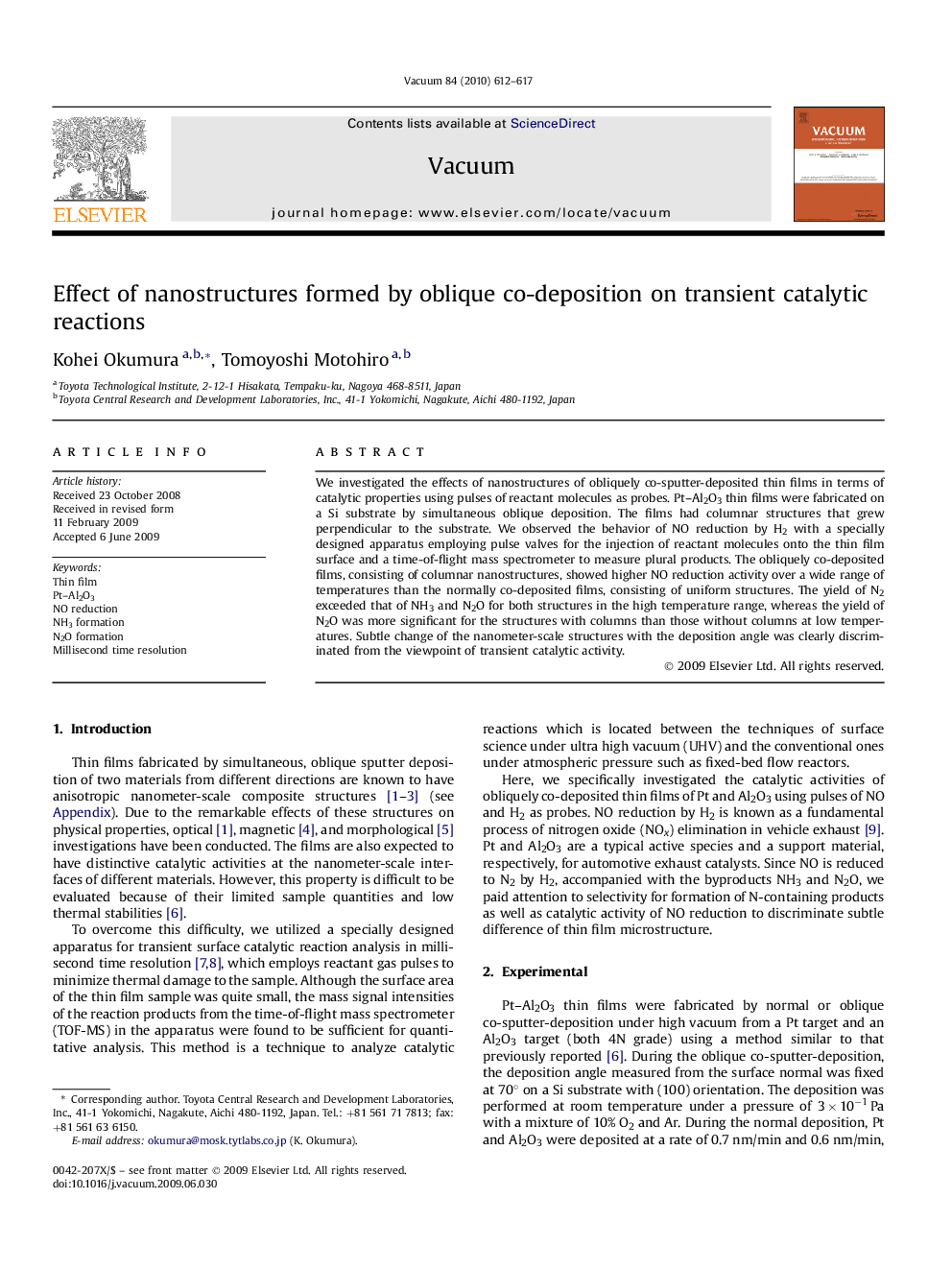| Article ID | Journal | Published Year | Pages | File Type |
|---|---|---|---|---|
| 1691041 | Vacuum | 2009 | 6 Pages |
Abstract
We investigated the effects of nanostructures of obliquely co-sputter-deposited thin films in terms of catalytic properties using pulses of reactant molecules as probes. Pt-Al2O3 thin films were fabricated on a Si substrate by simultaneous oblique deposition. The films had columnar structures that grew perpendicular to the substrate. We observed the behavior of NO reduction by H2 with a specially designed apparatus employing pulse valves for the injection of reactant molecules onto the thin film surface and a time-of-flight mass spectrometer to measure plural products. The obliquely co-deposited films, consisting of columnar nanostructures, showed higher NO reduction activity over a wide range of temperatures than the normally co-deposited films, consisting of uniform structures. The yield of N2 exceeded that of NH3 and N2O for both structures in the high temperature range, whereas the yield of N2O was more significant for the structures with columns than those without columns at low temperatures. Subtle change of the nanometer-scale structures with the deposition angle was clearly discriminated from the viewpoint of transient catalytic activity.
Related Topics
Physical Sciences and Engineering
Materials Science
Surfaces, Coatings and Films
Authors
Kohei Okumura, Tomoyoshi Motohiro,
